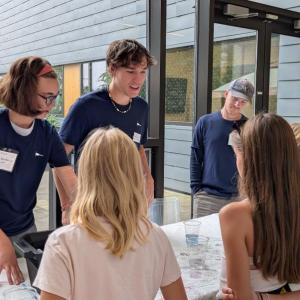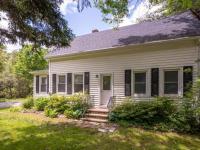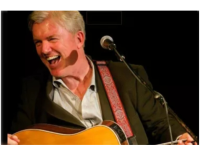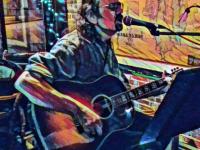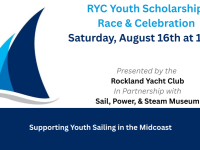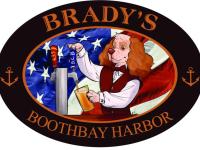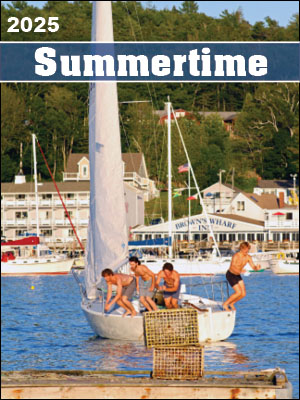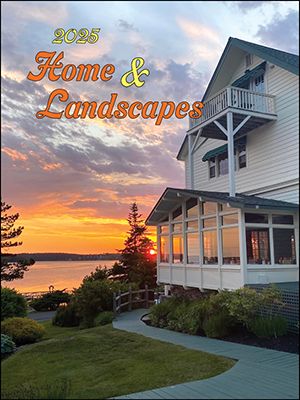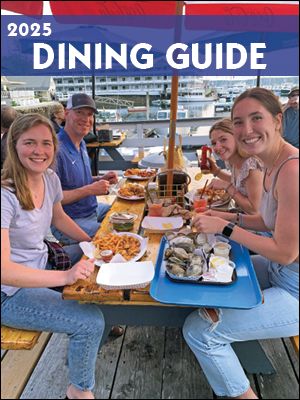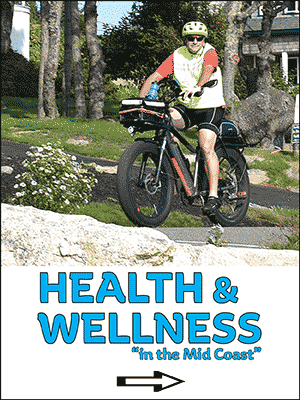Bigelow's open house showcases new addition
 Student researcher Annika Bjorklund, left, and summer research intern Ollie Tannahill teach visitors about ocean acidification at Bigelow's 2025 open house. CANDI JONETH/Boothbay Register
Student researcher Annika Bjorklund, left, and summer research intern Ollie Tannahill teach visitors about ocean acidification at Bigelow's 2025 open house. CANDI JONETH/Boothbay Register
 Dr. Reyn Yoshioka, left, and Dr. Melissa Rocker teach guests about marine diseases, highlighting the importance of data collection and predictive modeling for marine health. CANDI JONETH/Boothbay Register
Dr. Reyn Yoshioka, left, and Dr. Melissa Rocker teach guests about marine diseases, highlighting the importance of data collection and predictive modeling for marine health. CANDI JONETH/Boothbay Register
 Bigelow President and CEO Dr. Deborah Bronk addresses open house attendees on the value of foundational science and Bigelow's mission to leave a lasting, positive impact. CANDI JONETH/Boothbay Register
Bigelow President and CEO Dr. Deborah Bronk addresses open house attendees on the value of foundational science and Bigelow's mission to leave a lasting, positive impact. CANDI JONETH/Boothbay Register
 CANDI JONETH/Boothbay Register
CANDI JONETH/Boothbay Register
 CANDI JONETH/Boothbay Register
CANDI JONETH/Boothbay Register
 CANDI JONETH/Boothbay Register
CANDI JONETH/Boothbay Register
 Bigelow's Kristin Heidenreich boasts its National Center for Marine Algae and Microbiota has the world's largest and most diverse collection of marine phytoplankton. CANDI JONETH/Boothbay Register
Bigelow's Kristin Heidenreich boasts its National Center for Marine Algae and Microbiota has the world's largest and most diverse collection of marine phytoplankton. CANDI JONETH/Boothbay Register
 CANDI JONETH/Boothbay Register
CANDI JONETH/Boothbay Register
 CANDI JONETH/Boothbay Register
CANDI JONETH/Boothbay Register
 CANDI JONETH/Boothbay Register
CANDI JONETH/Boothbay Register
 CANDI JONETH/Boothbay Register
CANDI JONETH/Boothbay Register
 CANDI JONETH/Boothbay Register
CANDI JONETH/Boothbay Register
 Dr. Catherine Mitchell uses satellite color imagery to track large scale changes in the ocean. CANDI JONETH/Boothbay Register
Dr. Catherine Mitchell uses satellite color imagery to track large scale changes in the ocean. CANDI JONETH/Boothbay Register
 CANDI JONETH/Boothbay Register
CANDI JONETH/Boothbay Register
 CANDI JONETH/Boothbay Register
CANDI JONETH/Boothbay Register
 CANDI JONETH/Boothbay Register
CANDI JONETH/Boothbay Register
 CANDI JONETH/Boothbay Register
CANDI JONETH/Boothbay Register
 CANDI JONETH/Boothbay Register
CANDI JONETH/Boothbay Register
 CANDI JONETH/Boothbay Register
CANDI JONETH/Boothbay Register
 Dr. Rachel Sipler. CANDI JONETH/Boothbay Register
Dr. Rachel Sipler. CANDI JONETH/Boothbay Register
 CANDI JONETH/Boothbay Register
CANDI JONETH/Boothbay Register
 CANDI JONETH/Boothbay Register
CANDI JONETH/Boothbay Register
 Guests learn to extract DNA from strawberries. CANDI JONETH/Boothbay Register
Guests learn to extract DNA from strawberries. CANDI JONETH/Boothbay Register
 CANDI JONETH/Boothbay Register
CANDI JONETH/Boothbay Register
 CANDI JONETH/Boothbay Register
CANDI JONETH/Boothbay Register
 CANDI JONETH/Boothbay Register
CANDI JONETH/Boothbay Register
 CANDI JONETH/Boothbay Register
CANDI JONETH/Boothbay Register
 CANDI JONETH/Boothbay Register
CANDI JONETH/Boothbay Register
 CANDI JONETH/Boothbay Register
CANDI JONETH/Boothbay Register
 CANDI JONETH/Boothbay Register
CANDI JONETH/Boothbay Register
 CANDI JONETH/Boothbay Register
CANDI JONETH/Boothbay Register
 Student researcher Annika Bjorklund, left, and summer research intern Ollie Tannahill teach visitors about ocean acidification at Bigelow's 2025 open house. CANDI JONETH/Boothbay Register
Student researcher Annika Bjorklund, left, and summer research intern Ollie Tannahill teach visitors about ocean acidification at Bigelow's 2025 open house. CANDI JONETH/Boothbay Register
 Dr. Reyn Yoshioka, left, and Dr. Melissa Rocker teach guests about marine diseases, highlighting the importance of data collection and predictive modeling for marine health. CANDI JONETH/Boothbay Register
Dr. Reyn Yoshioka, left, and Dr. Melissa Rocker teach guests about marine diseases, highlighting the importance of data collection and predictive modeling for marine health. CANDI JONETH/Boothbay Register
 Bigelow President and CEO Dr. Deborah Bronk addresses open house attendees on the value of foundational science and Bigelow's mission to leave a lasting, positive impact. CANDI JONETH/Boothbay Register
Bigelow President and CEO Dr. Deborah Bronk addresses open house attendees on the value of foundational science and Bigelow's mission to leave a lasting, positive impact. CANDI JONETH/Boothbay Register
 CANDI JONETH/Boothbay Register
CANDI JONETH/Boothbay Register
 CANDI JONETH/Boothbay Register
CANDI JONETH/Boothbay Register
 CANDI JONETH/Boothbay Register
CANDI JONETH/Boothbay Register
 Bigelow's Kristin Heidenreich boasts its National Center for Marine Algae and Microbiota has the world's largest and most diverse collection of marine phytoplankton. CANDI JONETH/Boothbay Register
Bigelow's Kristin Heidenreich boasts its National Center for Marine Algae and Microbiota has the world's largest and most diverse collection of marine phytoplankton. CANDI JONETH/Boothbay Register
 CANDI JONETH/Boothbay Register
CANDI JONETH/Boothbay Register
 CANDI JONETH/Boothbay Register
CANDI JONETH/Boothbay Register
 CANDI JONETH/Boothbay Register
CANDI JONETH/Boothbay Register
 CANDI JONETH/Boothbay Register
CANDI JONETH/Boothbay Register
 CANDI JONETH/Boothbay Register
CANDI JONETH/Boothbay Register
 Dr. Catherine Mitchell uses satellite color imagery to track large scale changes in the ocean. CANDI JONETH/Boothbay Register
Dr. Catherine Mitchell uses satellite color imagery to track large scale changes in the ocean. CANDI JONETH/Boothbay Register
 CANDI JONETH/Boothbay Register
CANDI JONETH/Boothbay Register
 CANDI JONETH/Boothbay Register
CANDI JONETH/Boothbay Register
 CANDI JONETH/Boothbay Register
CANDI JONETH/Boothbay Register
 CANDI JONETH/Boothbay Register
CANDI JONETH/Boothbay Register
 CANDI JONETH/Boothbay Register
CANDI JONETH/Boothbay Register
 CANDI JONETH/Boothbay Register
CANDI JONETH/Boothbay Register
 Dr. Rachel Sipler. CANDI JONETH/Boothbay Register
Dr. Rachel Sipler. CANDI JONETH/Boothbay Register
 CANDI JONETH/Boothbay Register
CANDI JONETH/Boothbay Register
 CANDI JONETH/Boothbay Register
CANDI JONETH/Boothbay Register
 Guests learn to extract DNA from strawberries. CANDI JONETH/Boothbay Register
Guests learn to extract DNA from strawberries. CANDI JONETH/Boothbay Register
 CANDI JONETH/Boothbay Register
CANDI JONETH/Boothbay Register
 CANDI JONETH/Boothbay Register
CANDI JONETH/Boothbay Register
 CANDI JONETH/Boothbay Register
CANDI JONETH/Boothbay Register
 CANDI JONETH/Boothbay Register
CANDI JONETH/Boothbay Register
 CANDI JONETH/Boothbay Register
CANDI JONETH/Boothbay Register
 CANDI JONETH/Boothbay Register
CANDI JONETH/Boothbay Register
 CANDI JONETH/Boothbay Register
CANDI JONETH/Boothbay Register
 CANDI JONETH/Boothbay Register
CANDI JONETH/Boothbay Register
Bigelow Laboratory for Ocean Sciences (BLOS) welcomed visitors of all ages to its open house July 11 at the East Boothbay campus. The public met researchers, attended talks, participated in fun science activities and toured the new Harold Alfond Center for Ocean Education and Innovation. The free event, made possible by a Knickerbocker Group sponsorship, gave supporters and visitors a chance to learn firsthand about the importance, impact and joy of ocean science.
Guests could catch up on BLOS staples: Dr. Nicole Poulton’s work with flow cytometry, Dr. Peter Countway’s work in environmental DNA and their ecosystems, and Henry and Grampus, the autonomous underwater gliders BLOS uses to study the Gulf of Maine; they are always a crowd-pleaser. Kristin Heidenreich spoke of the lab’s marine phytoplankton collection, one of the world’s largest and most diverse. ”From different communications I’ve seen, there is an interest to see if a certain algae can grow on the International Space Station,” said Heidenreich. "I hope it’s possible but there’s nothing finite yet. It’s a fun thought exercise.” Heidenreich is an associate curator for BLOS’s National Center of Marine Algae and Microbiota.
Between talks, guests of all ages snapped selfies as mad scientists, viewed tiny ocean life through microscopes, built and raced their own plankton, extracted DNA from a strawberry, created algae art, toured their research vessel, the R/V Bowditch, learned about ocean acidification and practiced using oceanographic research equipment on the dock. Salty Boyz food truck fueled hungry visitors.
Dr. Catherine Mitchell gave a presentation on the science and art of using color from satellite imagery to track large scale oceanic changes. Dr. Reyn Yoshioka and Dr. Melissa Rocker spoke of the impact of infectious diseases on marine life, focusing on lobster health in this presentation, and how their data collection helps predict and manage pathogens by analyzing inputs across the epidemiologic triangle which highlights the interplay between agent, host and environment. Dr. Rachel Sipler, joined by representatives from the Boothbay Region Clean Drinking Water Initiative, provided an interactive demonstration on watershed health, local water quality and how pollution threatens water systems. “When we do our assessments, we’re monitoring to show that our water sources are healthy, and we don’t have to worry. By Bigelow’s collaboration with the water district and the clean drinking water initiative, we have a pathway for getting information and reporting out quickly if a concern arises,” said Sipler.
About 75 people attended President and CEO Deborah Bronk’s presentation on the value of scientific discovery and how BLOS’s new Harold Alfond Center is paving the way for the next generation of ocean science researchers and blue economy leaders to emerge. She showed her research in Antarctica and detailed how the "publish or perish" model, coupled with scientific peer review, strengthens scientific advancement. “At Bigelow, we study the foundation of global ocean health, pushing knowledge fundamentally forward, but the second part of our mission statement is that we use our discoveries to improve the future for all life on the planet. And we do. And that’s a pretty bold statement, but if you can derive understanding of the ocean and understand how to use the ocean, you can have a global impact,” said Bronk. “And how do we do this? One of the ways is by educating the next generation.” The new Harold Alfond Center expands BLOS' campus by about 40% including state-of-the-art laboratory facilities, dedicated teaching labs and classrooms, and a 300-seat forum that will become a hub for community outreach and scientific collaboration.

